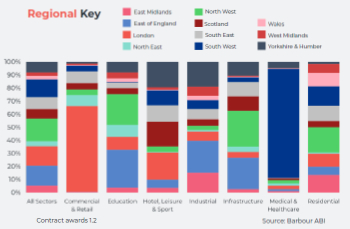Discounting for construction projects
Contents[hide] |
[edit] Introduction
Cost-benefit analyses can be used not only to examine the current benefits and costs of a project, but also the future benefits and costs.
Discounting is a way of comparing the value of costs and benefits over different time periods to their present values. It provides a means for accurately assessing the economic impact of a project over time and helps to calculate net present value (NPV - the difference between the present value of cash inflows and the present value of cash outflows for a long-term investment that can be used to assess the likely profitability of investments).
The principle of discounting is based around the time value of money. This is the concept that money is worth less in the future than it is in the present because of its reduced capacity for generating a return, such as interest, and because of inflation. Discounting is a means of assessing how much less an amount is worth in the future than it is now.
This is the opposite of the concept of ‘compounding’, which describes the rate at with an amount will grow over time due to the accumulation of returns such as interest.
[edit] Example
A construction project has initial costs of £1.7m. It is expected to generate the following cash inflow:
- End of year 1 = £120,000.
- End of year 2 = £250,000.
- End of year 3 = £550,000.
- End of year 4 = £1.3m.
To calculate the discount value at a rate of 5% you use the following equation:
120,000/1.05¹ = £114,285.70 (Year 1).
250,000/1.05² = £226,757.37 (Year 2).
550,000/1.05³ = £475,110.68 (Year 3).
1,069,512.22/1.05^4 = £1,069,513.22 (Year 4).
NPV = £1,885,666.97
NPV = £1,885,666.97 – £1.7m
NPV = £185,666.97
So there is still economic justification for the project to go ahead. However, if the discount rate is increased to 10% the result is:
120,000/1.1¹ = £109,090.91 (Year 1).
250,000/1.1² = £206,611.57 (Year 2).
550,000/1.1³ = £413,223.14 (Year 3).
1,069,513.22/1.1^4 = £887,917.49 (Year 4).
NPV = £1,616,843.11
NPV = £1,616,843.11 – £1.7m
NPV = -£83,156.89
In this scenario there does not appear to be economic justification for the project to go ahead.
[edit] Other definitions
The Green Book, Central Government Guidance On Appraisal And Evaluation, Published by HM Treasury in 2020, suggests discounting: ‘…is a technique that converts future values occurring over different periods of time to a present value by taking account of the human preference for value now rather than later. This concept is known as “social time preference”, and it is applied to real prices expressed in base year values and has nothing to do with inflation.’
Guide to developing the project business case, Better business cases: for better outcomes, published by HM Treasury in 2018, defines discounting as: ‘A method used to convert future values occurring over different periods of time to a present value so that alternative future values can be compared on the same basis.’
The SuDS Manual published by CIRIA in 2015 defines discounting as: ‘A method to compare the benefits and costs that arise over the appraisal period. The discount rate converts all costs and benefits to the present day to determine the present value (PV) or whole life costs (WLC) so that they can be evaluated consistently.’
Insurance Policyholder Taxation Manual, published by HM Revenue & Customs on 19 March 2016, defines discounting as: ‘a term used to describe adjustments made to general business reserves so that they reflect the present value of the future contingent liabilities; such an adjustment may be made for accounting purposes, and may in certain circumstances be required for tax purposes where the reserves are initially calculated by reference to the likely ultimate cost of settlement after taking into account monetary inflation, and also the tendency for court awards for damages to increase by more than the rate of inflation; the adjustment is usually made by discounting the ultimate cost of settlement by reference to a suitable rate of interest, thus reflecting the time value of money.’
[edit] Related articles on Designing Buildings
- Base year.
- Cash flow.
- Compound Annual Growth Rate (CAGR).
- Cost-benefit analysis in construction.
- Discounted cash flow.
- Discount rate.
- Gross value added (GVA).
- Internal rate of return for property development.
- Investment.
- Life cycle assessment.
- Life Cycle Costing BG67 2016.
- Net present value.
- Payback period.
- Time value of money.
- Whole life costs.
- Yield.
[edit] External references
- CBA Builder – Discounting and Compounding
- Cost Benefit Knowledge Bank
Featured articles and news
Spring Statement 2025 with reactions from industry
Confirming previously announced funding, and welfare changes amid adjusted growth forecast.
Scottish Government responds to Grenfell report
As fund for unsafe cladding assessments is launched.
CLC and BSR process map for HRB approvals
One of the initial outputs of their weekly BSR meetings.
Architects Academy at an insulation manufacturing facility
Programme of technical engagement for aspiring designers.
Building Safety Levy technical consultation response
Details of the planned levy now due in 2026.
Great British Energy install solar on school and NHS sites
200 schools and 200 NHS sites to get solar systems, as first project of the newly formed government initiative.
600 million for 60,000 more skilled construction workers
Announced by Treasury ahead of the Spring Statement.
The restoration of the novelist’s birthplace in Eastwood.
Life Critical Fire Safety External Wall System LCFS EWS
Breaking down what is meant by this now often used term.
PAC report on the Remediation of Dangerous Cladding
Recommendations on workforce, transparency, support, insurance, funding, fraud and mismanagement.
New towns, expanded settlements and housing delivery
Modular inquiry asks if new towns and expanded settlements are an effective means of delivering housing.
Building Engineering Business Survey Q1 2025
Survey shows growth remains flat as skill shortages and volatile pricing persist.
Construction contract awards remain buoyant
Infrastructure up but residential struggles.
Warm Homes Plan and existing energy bill support policies
Breaking down what existing policies are and what they do.
A dynamic brand built for impact stitched into BSRIA’s building fabric.






















Comments
[edit] To make a comment about this article, or to suggest changes, click 'Add a comment' above. Separate your comments from any existing comments by inserting a horizontal line.